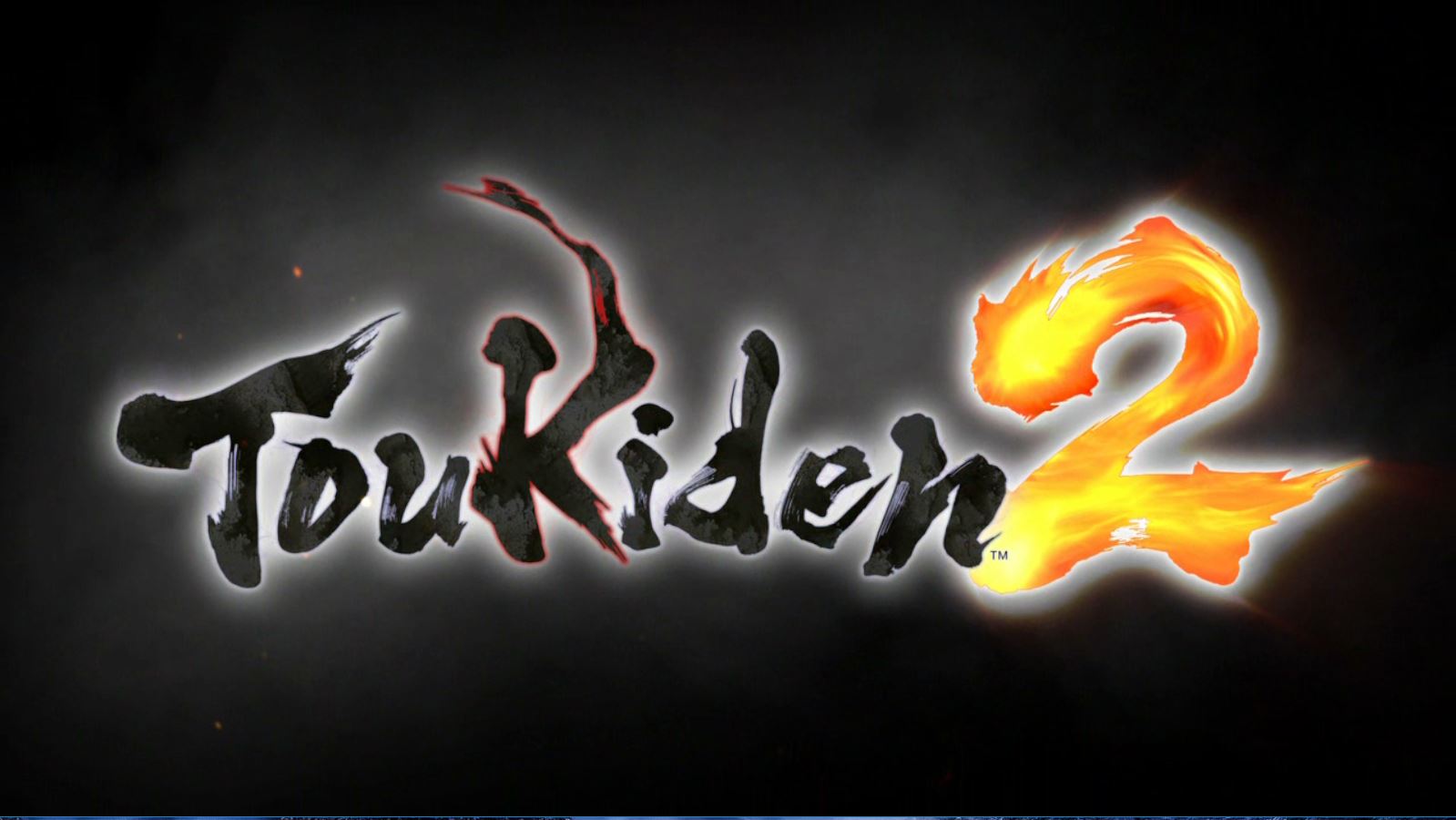Calling all Slayers, Emergency! Emergency! The Oni are invading again!
Type: Single-player
Genre: Action
Developer: KOEI TECMO GAMES CO., LTD.
Publisher: KOEI TECMO GAMES CO., LTD.
Release Date: 21 Mar, 2017


Introduction
Toukiden 2, as the two in the title implies, is a sequel to the original Toukiden. While I have not had the pleasure of playing Toukiden: The Age of Demons (also known in its enhanced form as Toukiden: Kiwami), I can say that Toukiden 2 works well as an entry point into the series as so far I have not felt that I missed anything by not playing the original. The basic premise of the game is that demons are invading and it is up to the Slayers (monster hunters) and the city guards/samurai to protect the townsfolk and surrounding lands from the demonic Oni. You play as a character of your own design who slips through time, waking up in the future without any real memories of the past. You are quickly caught in the middle of things and join the good fight to help protect your new home as well as try to put an end to the Oni incursions once and for all.
Official Trailer
About the Game
First thing we will talk about is the dialogue in the game. As with many notable games of the past, the playable character is pretty much mute. It is implied the character is talking through their gestures, but despite picking a voice for the character they never seem to speak. There is absolutely nothing wrong with that, but it is kind of funny that I spent quite a bit of time picking the voice I liked the most, using the tweaking slider to pitch it just right, then to never actually really hear the character speak that much. That’s actually fine and dandy with me anyway because the spoken language in the game is Japanese only. The game provides subtitles most of the time, however, the random dialogue that is spoken in the field as well as some dialogue in at least one of the cutscenes isn’t translated so you just have to assume whatever was said was likely just atmospheric rather than important. Sometimes when the characters are progressing the story while in combat, I really wish I could understand what they were saying without having to look at the text box in the corner. The reason is simply because I tend to die easily in combat or run over a cliff if I am not paying enough attention.
Other than having the ability to customize your character’s voice, you can also customize their appearance. Most major elements are available for you to tweak to your heart’s desire. There are tons of hair options, some hairdos even having alt-versions of the same style that are accessible through a submenu while scrolling though the main options. You can also colour it almost any possible shade/colour/hue you can imagine. The same can be said for the character’s eyes. You are able to configure facial features, character height, weight, and general sizes all around. I could go on at great length talking about the character builder, but for the sake being concise I will simply state that the character builder is surprisingly complex and that it was quite enjoyable being able to customize my character exactly how I wanted it.
While making your character you are given your choice of starting weapon. For most games, this is you making a life altering decision right from the get go before ever getting to play the game. What weapon do I want use for the entire time I am playing this? So many to choose from! Luckily, this game out right tells you that your decision doesn’t matter here. Once you get past the starting area of the game, you will be given one of every starting weapon and have the ability to freely switch between them all as much as you want. You have no starting class skills to worry about. Different battles may be easier or harder depending on your weapon choices, but at least you are not stuck with a weapon you hate or forced to restart because you don’t like that one particular weapon!
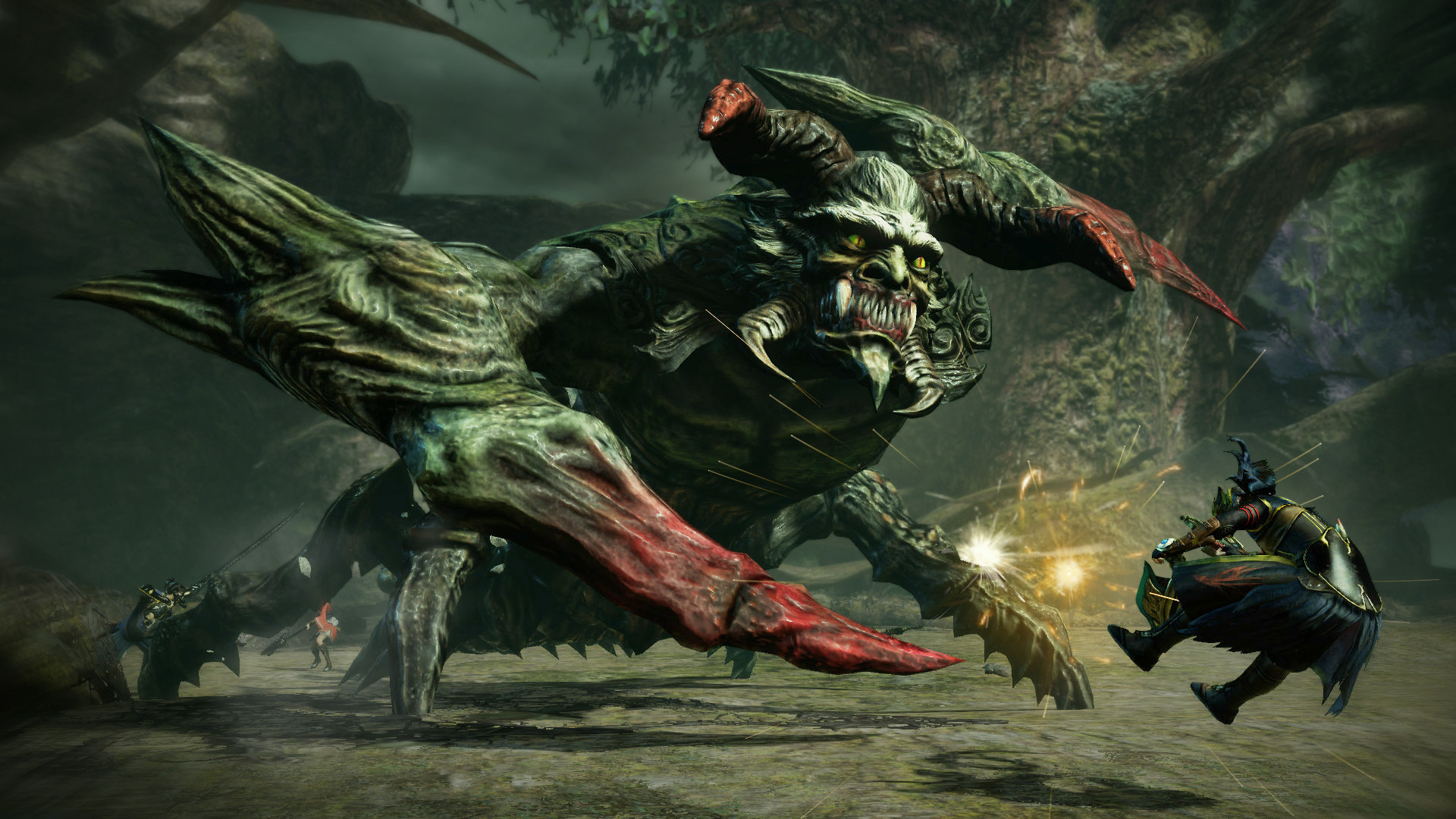
I used to be a keyboard and mouse player, and I hated the gamepad, but as time went on I have found myself using my gamepad almost exclusively when I can. The rifle in this game doesn’t seem designed to be gamepad friendly with the default keybinds, or perhaps I just didn’t use it long enough to get a full grasp on proper utilization. It required me to use the right thumbstick to aim the gun, while using the right-side buttons to charge/fire the shot as well as entering key combos. I found that really awkward as I was also having to move with the left stick to avoid getting trampled when the bosses ran at me. The sad thing about this is the fact the rifle seemed to me to likely be the best choice of weapon for dealing with bosses, but I will talk about that more later. Luckily, as mentioned, I was not stuck with the gun and currently am using a chain whip. Why a whip? Because swords and shields are common in these sorts of games, and I always prefer something a little different or unique! Since there are plenty of weapon options, there is certainly at least one you will find works best for you.
If you do find a class of weapon you like the best, you can invest in creating or buying better versions of it. Alternatively, you can re-forge or enhance your current weapon to make it better. When you are enhancing the weapon, you can choose what it is about it that you want to enhance/make better. It isn’t simply just an auto-enhancer, you get to customize it yourself here too! The same goes for your armor. This game has plenty of customization options available to you which are always a great thing to have. The way crafting/enhancing works is that you will find materials as you explore outside the town, either just lying around or as spoils of battle. Once you have enough to suit the recipe you can then craft/re-forge/enhance what it was you are after. Now why would you want to enhance an old bit of gear rather than just making a newer better one? That’s a good question! In terms of armor, I can say, some armor looks better than others. That will all come down to personal preference though, so really, I like having the choice.
One last bit of customization I would like to talk about before moving on to talking about the game is the fact your skills and abilities are tied to both your gear choice and your Mitama (think of them as spirit guides, dead warriors who lend you their power). You pick which Mitama to install into which slot of your gear. Depending on which slot you choose will depend on what they can do for you. The first slot gives you your four extra combat abilities besides your basic fighting ones. The second and third give you bonus abilities that can be triggered if their conditions are met. If you make a set of Mitama, either with people who are from the same place and knew each other, or of the same ability type, you will get additional bonus benefits. As you can see already there is quite a bit of complexity in this game and it might seem a bit overwhelming at first, but eventually you will get into the rhythm of things.
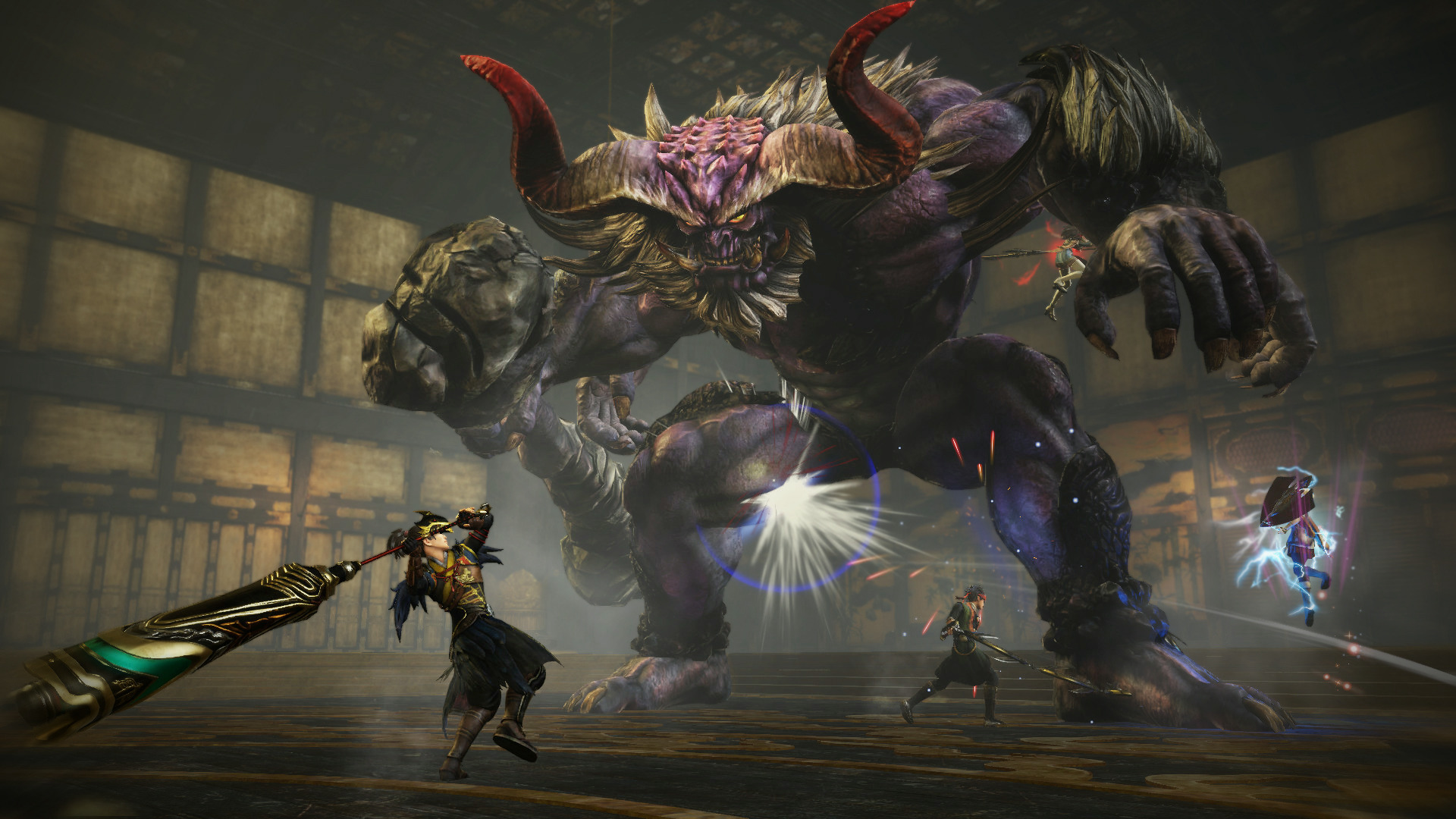
Now that we have talked about the customization, let’s talk about the gameplay. Gameplay is divided into three main areas. The village, which is, for the most part a safe haven, the area around the town which is pretty much under control with minimal Oni presence, and then there is the Otherworld, which is where the Oni presence is strongest. The village itself is divided into a few different parts and you will learn about the trials and tribulations of the various factions of the townsfolk. All of that add flavor to the game, but it is the least fun part to describe simply because it is mostly just a hub for you to do your basic shopping/crafting and where the story is progressed. The real action takes place outside of its walls. Let’s dive right into the heart of the game, the Otherworld. The Otherworld is an interesting place. Unlike the rest of the world, you will die here if you just stand around too long. The reason for that is because the Oni produce Miasma which is basically a gas that slowly kills you if you were to breath to much of it in. Different parts of the Otherworld have different concentrations of Miasma so you really have to watch where you are going, especially if you are nearing your exposure limit. Luckily there are ways to reduce it so you can explore the area as much as you want so long as you avoid the really heavily concentrated areas until you purify them a bit. The Miasma system really helps add a sense of danger to the game. Admittedly, I find it annoying at times when I am busy wandering around looking for hidden objects and forget about watching the Miasma gauge until I realize too late I am deep inside a red zone! The Miasma system, for the most part, really helps make the game’s story more understandable and adds an extra layer of interest and fun to the gameplay.
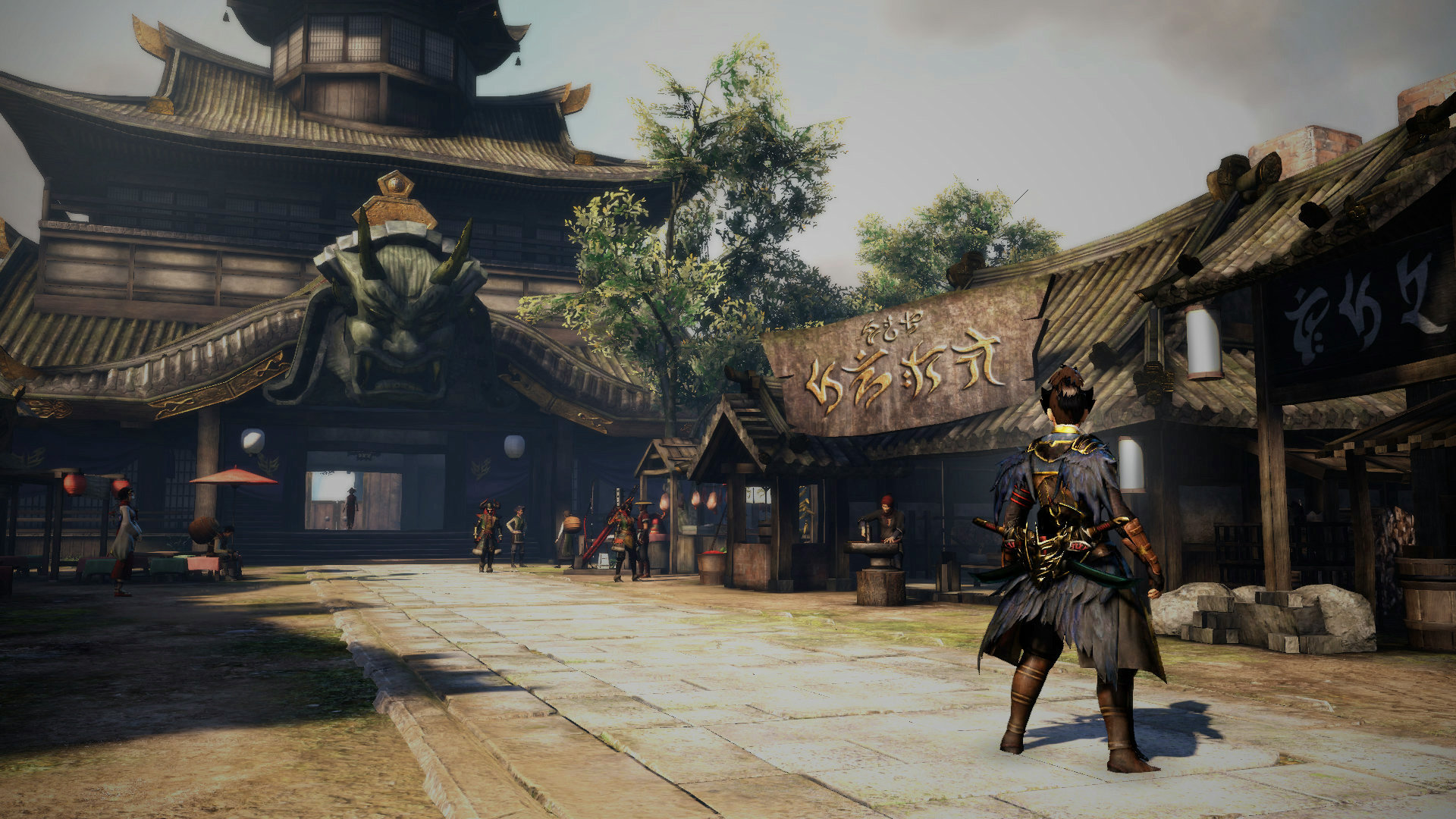
With that we have that out of the way, let’s get to what everyone was waiting for, the combat system! Depending on which weapon you are using the key combos can vary widely, but also how effective they are versus various monsters will vary too. This is not really a game where you can get away with just spamming the same button for every fight. If you do that, you will miss out on most of the power the weapon has to offer either through its secondary abilities or through the key combos. For example, the chain whip I mentioned earlier. It’s a mid-range weapon that lets you stay mostly out of the melee range of the enemies, but also lets you hit multiple enemies in a single swing. Using its secondary ability, it can fire a barb at the enemy and if struck, the barb will explode dealing extra damage to the enemy. You can also use the whip to pull yourself towards the enemy’s weak spot even if it is way up in the air! The sword or fists are more useful against single targets in melee range. The gun and bow are long range weapons that are useful for hiding from the direct combat while sniping at the enemy. There are various other weapons too, some of which can fit multiple roles such as the Chain and Sickle which is kind of a combination whip and blade. Melee weapons and long-range weapons have the advantage that you can more easily target specific points on a monster. When dealing with bosses, this lets you sever parts of its body, reducing its armor and allowing you to start doing real damage to the enemy. Weapons like the whip make targeting specific body parts a little more difficult in my opinion, but it could also be I am just terrible with targeting the whip! That’s the reason why I was disappointed that I was so poor at controlling the gun due to its main controls all being on one side of my gamepad by default. It would have made an excellent and easy way to pick off limbs from the major bosses. I’m sure if I spent enough time working with it, I would start to wonder why I didn’t always use it though. Luckily the game has a detailed encyclopedia as well as an accessible almost any time tutorial service that will help you master any weapon you want to use.
Getting more into detail about the combat system, the basic idea is that you and your squad of helpers will encounter Oni roaming around the world. You can issue orders to each of your companions or you can issue a general order for them all to follow. If the Oni are only little ones, just beating them senseless is usually the quickest and easiest way to deal with them. Admittedly I got to the point where I just ignore the little ones and have my companions beat them up as I continue walking along! The larger ones take more strategy as you will have to lay down quite a few hits before they die and they have a greater threat potential. The bosses are all quite challenging and will take the significant amount of time and effort to bring down as you should expect they would. As you kill enemies or break bits off the larger ones, you can purify them, which stops them from producing Miasma and restores a smidge of your exposure meter as well as grants you some useful crafting material.
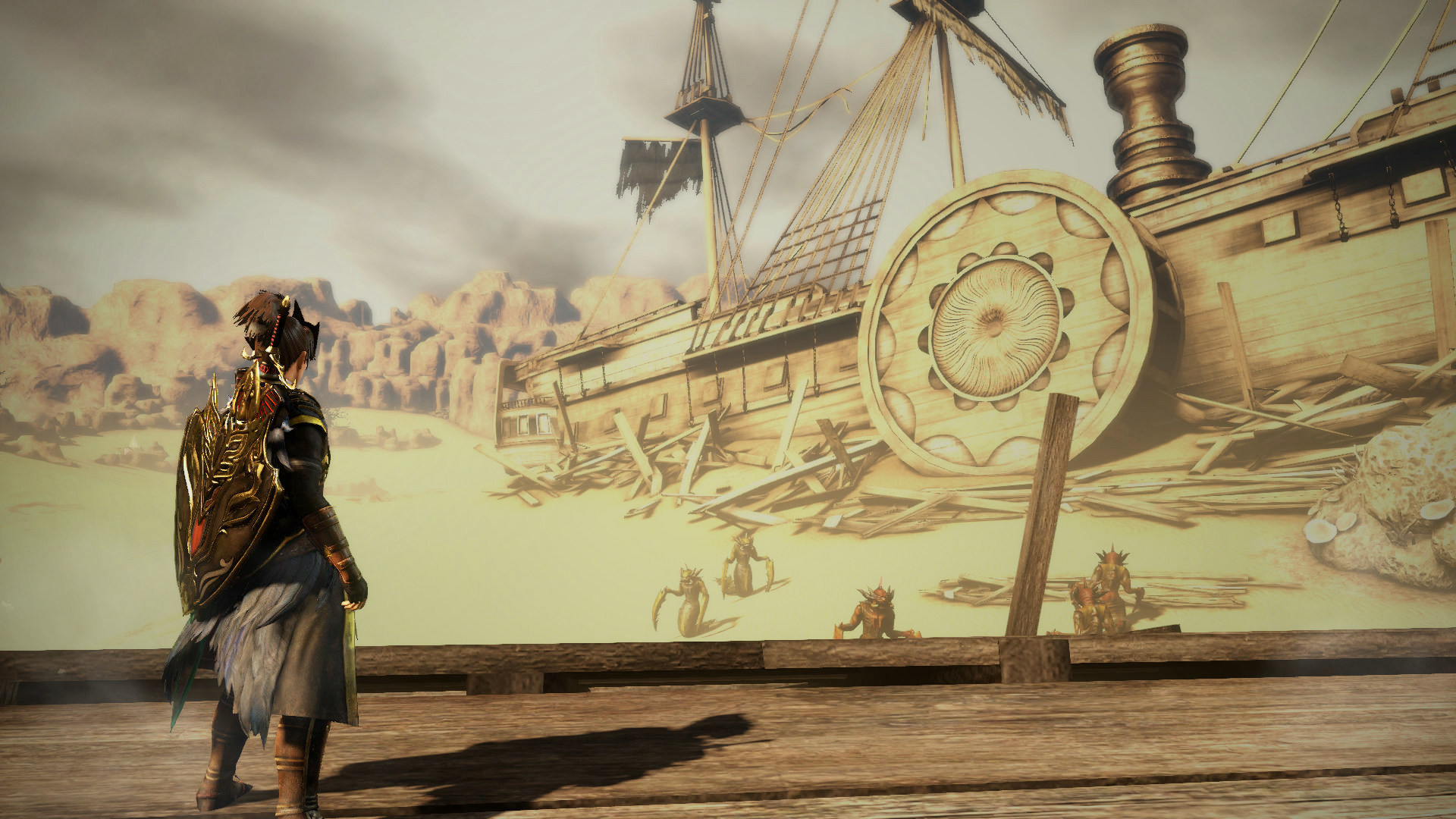
As you explore, or as you move towards your Quest’s destination, you will sometimes encounter other Slayers in battle with Oni. If you decide to join in, you will trigger a special Joint Operation quest. Once the conditions of the quest are satisfied you will be rewarded and the Slayer will join you temporarily, granting you an extra character beyond the normal maximum. They act similar to the characters you have in your party other than they lack the tool that makes this game fairly unique, the Demon Hand.
The Demon Hand is something that adds an extra level of interest to the game. It’s basically, as the name suggests, a hand. This hand resides inside a Machina (device) attached to the wrist of any of the main characters of the game. It allows them to reach out and grab things beyond their normal range. If used in combat you can grab an enemy to pull yourself close, or use one of its abilities to inflict an attack on the enemy. Used out of combat it can sometimes help you scale cliffs or climb trees. It also facilitates long range communication with the Professor who invented it. It’s definitely something that enhances the gameplay and helps sets this game apart from other Monster Hunter style games.
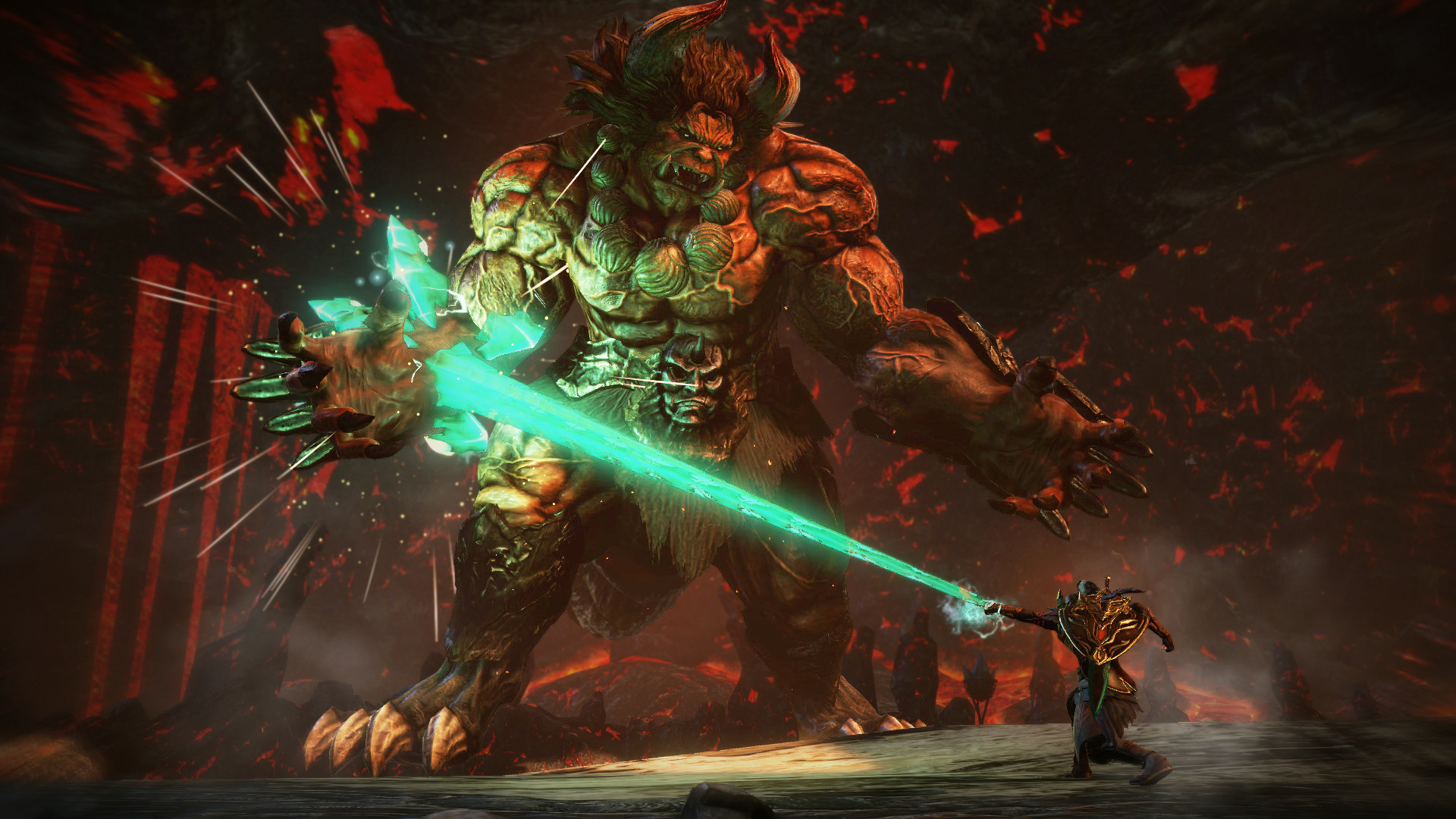
Graphically, the game looks really good considering it is a Vita port. Each of the major zones has enough environmental variation in design to really make it feel like you are exploring the world. The water looks realistic enough and the trees move in the wind as well, fine little details which really enhance the sense of adventure. There are warp stones/shrines available in each of the zones that allow fast travel once they are unlocked. This can be quite useful; however, you will still find yourself walking a lot as these stones are few and far between so it is a good thing that each of the areas looks as nice as it does. The characters are also all heavily detailed as well. Most of them have their own completely unique look, but even the more generic characters have plenty of details which helps set them apart from the others. The player character’s weapons and armor all have variations on their style as well which is always a positive thing where you are not looking at the exact same gear for the entire game. The minimap and main map have enough details to help you find where you going, but only if it is your main quest. Sadly, side quests don’t seem to get a waypoint marker to help guide you to your destination. You will either have to wait until you blindly stumble upon what you are looking for, or actively go hunting it on your own after reading the basic clue it gave you. Mind you, I have become lost even with a main quest marker before, so maybe it isn’t as difficult to track down a side quest destination as what I think it is.
As for the audio, the atmospheric music suits the game quite well as do the sound effects. It would be nice if I could understand what the characters were saying at all times, because I feel like I am missing something by not knowing what the random comments they are making are. However, that is something I am willing to ignore because most of the time, characters in these sorts of game spam the same few lines of dialogue ad nauseam to the point where you just want them to shut up anyway! The game is delivered between a mix of spoken dialogue and text on screen only. It’s a little weird at times where it will be dead-air text boxes then suddenly a character has a quick line of spoken dialogue or laugh then going back to complete silence, but at least it helps keep your attention.
The controls in this game for the most part work well other than the rifle, but that is likely just me not quite grasping it properly. I’ve never been good at stringing key combos together properly either, but I mostly have no issues doing so in this game. The key combinations are not so complicated that I forget which order they need to be pressed in but sometimes are mildly awkward to press with my gamepad. The camera controls also work well to the point that have I never found myself staring at a wall trying to figure out where my character is.
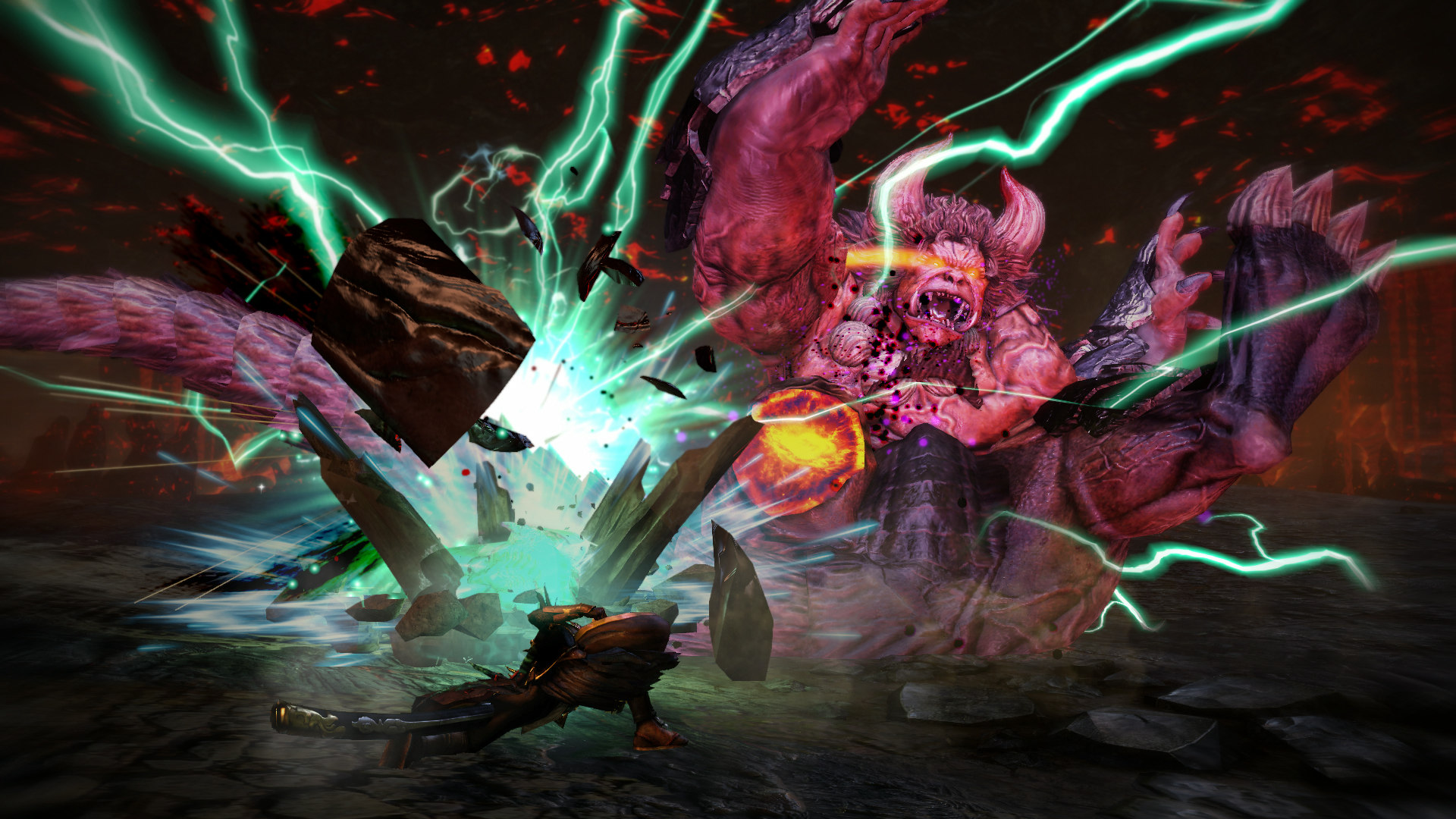
Now to talk about a few things in passing before ending this review. The first thing is the fact there is a choice system in play when speaking to some characters. Often times the game will pause and ask you which of the options is the one you want to say. I can’t entirely tell if the choices make a difference in the end as the game will progress regardless of which choice you made, but the NPC you are talking to generally reacts in a positive or negative way momentarily in response to whichever choice you made. Since the game has a friendship system, I assume it has something to do with that. Choosing the answer that is most appropriate likely advances your friendship and choosing the wrong one doesn’t.
The other thing I wanted to talk about is the co-op/multiplayer system. This game supports co-op missions, which is fantastic. At any time, you can choose missions that you can play with other real world people. Sometimes it can be a bit of a challenge to find people to play with online because the lobby isn’t always that populated. Also, sometimes people can be a bit unhappy when a random person joins them and will kindly or not so kindly ask you to leave, but when you find a good group it can be quite thrilling to see how others play the game. These missions play similar to the offline single player missions but rather than having NPCs assisting you, you have other players. I admit I was a bit hesitant at first to go online, but after I did, I found myself stopping the main campaign progression just to fool around with other players.
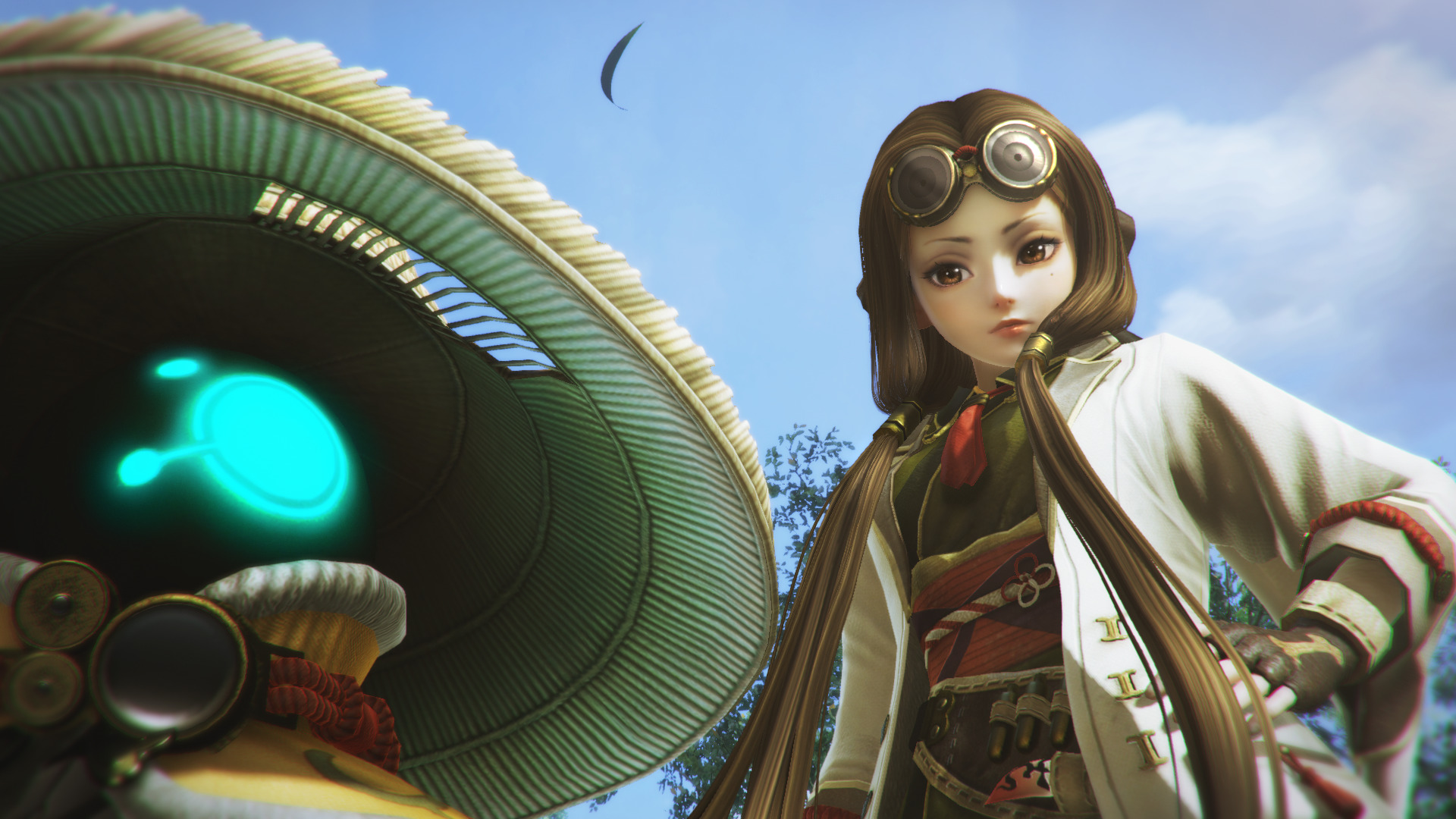
So, should you get this game? Without having played the earlier title in the series, playing this one made me want to someday pick it up and give it a try too. The story elements are compelling enough that it keeps you wanting to press on to find out more about your character and see how the various political elements of the village works out. The main characters themselves all have their own unique and quirky personalities which makes them all fun to hang around with and share the story with. The village setting, with its overall Japanese theme including Japanese style cultural elements actually help make the village seem like a real place rather than just the game world hub it is.
Overall, if you enjoy games that involve hunting monsters that are often much larger than you are and that take a general strategy to bring down rather than just hacking and slashing your way through them, then you should consider Toukiden 2. If you enjoy games that have a kind of living world element to them, where your actions have a meaningful impact on the world at large then you will likely enjoy Toukiden 2. What do I mean by living world? Things such as if you randomly (no pre-given quest telling you do it) go clear out the monsters on a trade route. This will give the trade caravans an easier time in reaching the village and therefore there will be more merchandise choices available to purchase at the local market type of impacts. Since it wasn’t just a quest telling you to do it, it makes it feel like you are actually doing good deeds rather than just the task at hand. To wrap things up, if you are ready to put your wits and energy into protecting a village and at the same time want to feel good about doing it, Toukiden 2 is a wonderful choice and a definite Save!

